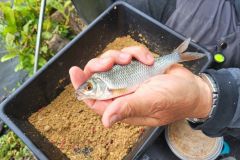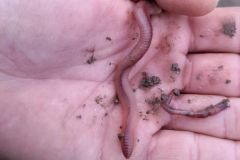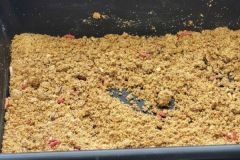What color?
Let's get to the heart of the matter by answering THE most frequently asked question in the world of maggot users: which color works best? Well, like the Norman in me, I'll tell you: "It depends! But on what?
If I were to give you a peremptory answer, stating here that, for example, ruby red is the panacea, your reflex should be to be wary. In fact, even if certain colors work better overall than others (ruby on roach, bronze on chub, etc.), depending on the fishing area, the fish you're after and the time of year, you're going to get many variations. So, like the painter, take several colors with you.
Here are my favorite colors:
- White: the natural maggot is a sure bet, especially in winter, when it stands out against its surroundings. It's also my all-season staple when it comes to feeding, and I've lost count of the chub and barbel that have fallen for its alabaster complexion.
- Red and ruby: in my opinion, these are the most effective on bleak, roach, bream and tench. There are two variants: the red, coloured from the inside by its food, and the ruby, a red that has been over-coloured externally (watch your boxes and fingers, the dye is powerful), giving it the look of a plump bloodworm. I usually put the reds in the groundbait and the rubies on the hook.
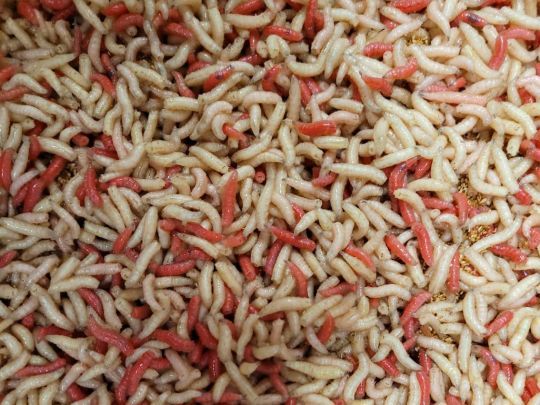
- Bronze is a must-have for river fishing, as chub, chubfish and other barbel love it. A color that appeals to all beautiful fish. I use it mainly on hooks, sometimes replacing caster.
Here's a tip: bronzers are hard to find, so make your own by sprinkling turmeric over some whites. Overnight, they'll be perfect, especially if the turmeric is freshly roasted and finely grated. The slightest moisture will increase its coloring power, even on your fingers.
Gozzers and pinkies
Size matters or not! And I'd add that you can catch both small and big fish with gozzers (the big maggots) and pinkies (the small ones). The smaller ones are tougher and less nourishing than gozzers, which means they're more likely to be used as baits in groundbaits.
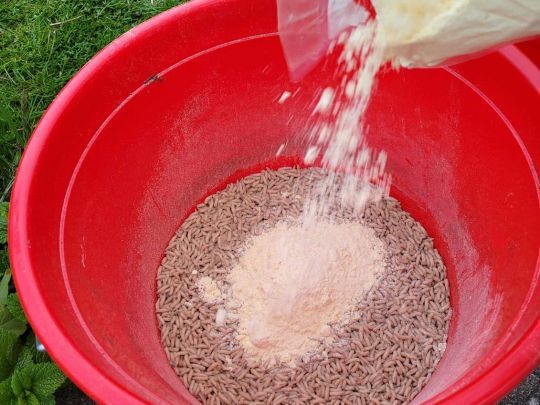
Large maggots are used for hooking and feeding. But sometimes, often, it's the other way around. Carry both with you and test fish reactions. A feeder full of large maggots can work wonders, as can pinkies.
On the hook too, be inventive. While I don't often mix the two sizes, I do alternate small and large bites, with 1 to 6 larvae on the hook being the norm.
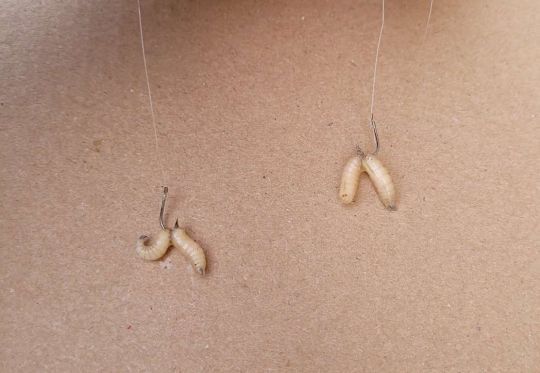
If you have 2 or 3 maggots on the hook, you can avoid twisting the leader by using a head-to-tail jig!
Maggots to cast
For big roach and bream, in the feeder or on the hook, they're a must, and I've sometimes had more than 1 liter of them on my hook during the 5 hours of a competition. Their immobility allows me to select the most beautiful fish and they are of little interest to the small fry, including the goby! I'll talk more about this in a future article.
Just be aware that this maggot has not been treated with development-blocking hormones, like most maggots on sale. This means you'll have a much faster transformation into a caster and far fewer deaths with this "natural" larva. In other words, not all maggots are good for making casters.

 /
/ 


